Up the Kinabatangan River in Borneo "with" a Paddle

Peregrina's Journey
Peter and Margie Benziger
Sat 1 Sep 2012 05:33
05:49.6N 118:20.0E
Up
the Kinabatangan River in Borneo “with” a Paddle
The Kinabatangan River is located
in the northeast corner of Borneo. It is the second longest river in Malaysia
with a length of 560 kilometers. It runs from headwaters in the mountains of Sabah
Province to its outlets at the Sula Sea, east of the capital city of Sandakan.
The map below shows the Kinabatangan River system with its many tributaries.
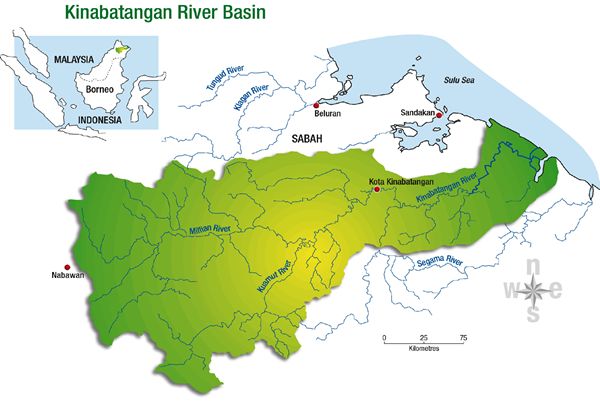
There
are two entrances for cruising yachts headed to the Kinabatangan. We took the more northerly entrance at Trusan
Kinabatangan. The southern entrance at
Dewhurst Bay meets up with the northern route at the “crossroads” near the
village of Abai. For those old enough to
appreciate this bit of trivia, Abai was also once the location for the filming
of the original Tarzan movies with Johnny Weissmuller in the 1930’s.
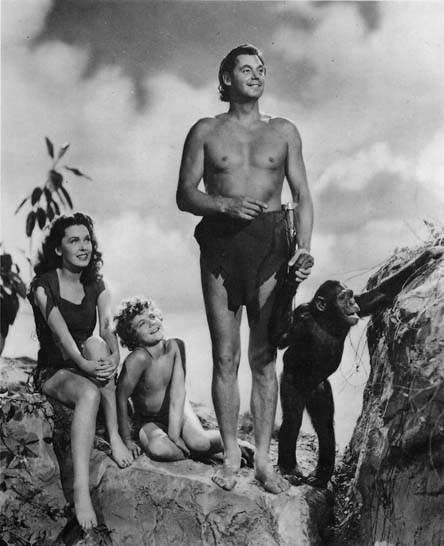
One of the navigational
challenges of entering the Kinabatangan River in a cruising yacht is to safely
pass over the “bar” on the seaward side of the northern river entrance. Just to
clarify, I’m not referring to the local pub where one might stop off to grab a
cold Tiger Beer. The “bar” in this case
is a barrier of shifting shallow sandbanks that can change the water level dramatically
with little or no warning depending on the tides. If you go aground, there is
no ‘Tow-US’ rescue service to pull you off.
Therefore, it’s very important to enter the river slightly before high
tide and, even then, it’s a dicey situation which calls for all eyes onboard
watching carefully.
As we crossed the bar, Peregrina,
which has a deep 6’2” keel, had less than 3 feet under her at extreme high
tide. However, the tidal change in the Kinabatangan is almost 7 feet from high
to low so we would have definitely been stuck in the sand if we tried to cross later in
the day when the water level had dropped significantly. Yachts arriving at the mouth of the river too
late take a huge risk in attempting to cross the bar on a falling tide. It’s important to time your arrival for high
tide and preferably in the morning hours since afternoon storms frequently come
up with 30 knot winds and crashing waves which would drive a vessel harder
aground with the potential for disaster.
Once
Peregrina was over the bar, she entered an amazing world. The Kinabatangan was home to the headhunters
of Borneo in days gone by. Let’s just
say we hope those days are LONG gone by…!!!
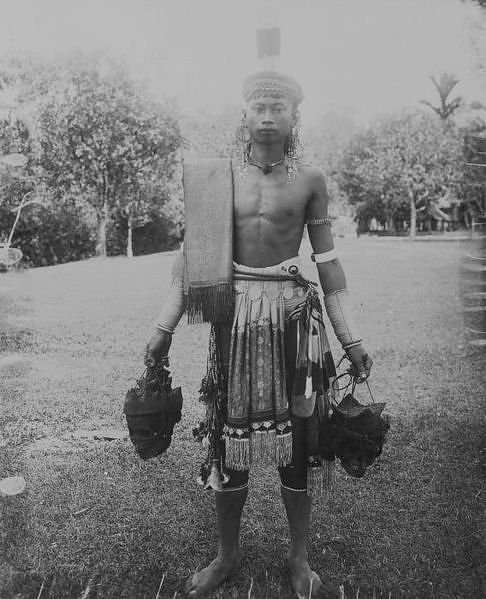
It
took a while to understand the art of navigating this serpentine river. The
basic rule of thumb is to head towards the outside of the curve since the water
will be deeper there than on the inside. Knowing when to cross over from one
side to another is not always easy and several times, while learning how to
“read the river” Peregrina’s depth sounder showed less than a foot of water
under the keel. That’s when you hold
your breath and pray for the depth meter to rise.

We
traveled 23 miles up the river but our electronic charts were pretty much
useless. Here is a picture of the river according to Navionics program. The
black line on land is Peregrina’s track….all over land rather than in the River! So, as Peter always says, “Get your head out
of the charts and just watch the water!”

The
ecology of the upper reaches of the river has been severely disrupted by
excessive logging and clearing of land for palm oil plantations. However, the
original lowland jungle and mangrove swamps along the coast have largely
survived and provide sanctuary for some of Borneo's highest concentrations of
wildlife. Of special note are the endangered orangutans, indigenous proboscis
monkeys, long-tailed macaques, Asian elephants and Sumatran rhinoceros. The
area is also known for its great variety of birdlife as well as a population of
saltwater crocodiles. At night, we saw a
huge Buffy Fish owl and thousands of fireflies!
At
the end of our first night on the river, we anchored off the small town of Abai
and we went ashore in our dingy. We had been advised by our friend, Charlie
Ryan, to look up a woman named Jarimah. She
runs a number of community programs for the residents of Abai including a
re-forestation project which is helping to plant new trees where the timber has
been extracted from the land leaving huge barren landscapes. You can buy a
small tree for just 3 ringgits ($1.00) and do your part to reclaim land that
has been ravaged by the timber and palm oil industries.
Jarimah
also runs the “Moido Waloi Homestay Abai” which can take up to six guests each
night. Here’s a shot of Peregrina
anchored just in front of Jarimah’s house.

Malaysia
has an excellent program throughout the entire country which enables the
adventurous traveler to go and spend time in very small villages living with
real families. We’re not talking “The Real Housewives of Orange County”
here. This is home hospitality with an
opportunity for cross-cultural communication and understanding. The accommodations are very clean but simple.
If you are interested in experiencing Malaysian
life up close and personal, visit the Homestay Association for Sabah at
www.sabah-homestay.org and pick your homestay, or email moidowaldihomestay {CHANGE TO AT} gmail {DOT} com.
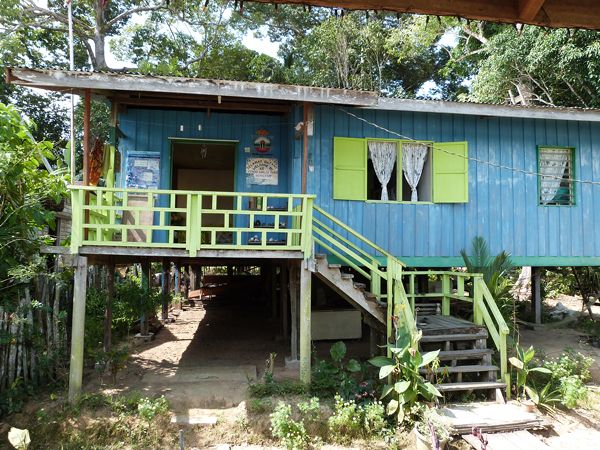
Since
we travel with our “floating home” all around the world, we didn’t check in for
the night but Jarimah prepared a wonderful meal served by three of her daughters
out on the deck overlooking the river.
Delicious!!! We recommended her
to several other “yachties” and she got rave reviews from all our friends. Here’s a shot of Jarimah, her husband and
three of their six children.

Over
the course of the next two days, we traveled another 23 miles up the river until
we came to the town of Sukau.
This
portion of the Kinabatangan River between Abai and Sukau offers many
opportunities to see the indigenous wildlife of the area. Each day on the
river, Peregrina, would travel looking for small tributaries to explore. When
we saw a small opening off the main river, we would anchor, launch the dingy
and go “up the creek with a paddle” since the water was not always deep enough even
for the 15HP Yamaha outboard engine.
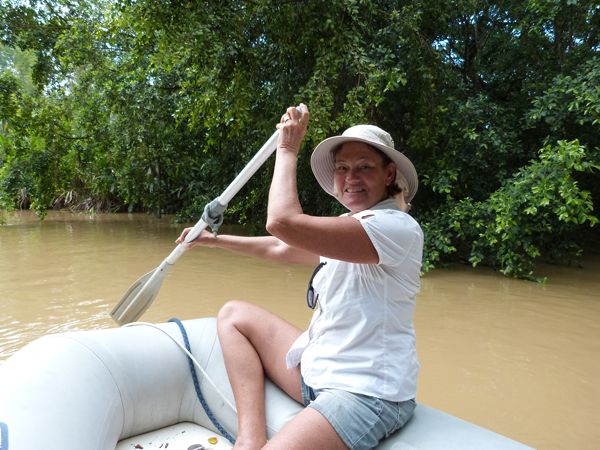
We
saw all sorts of monkeys including Long-tailed Macaques, Probiscus and
Orangutans. You gotta love these faces!!!
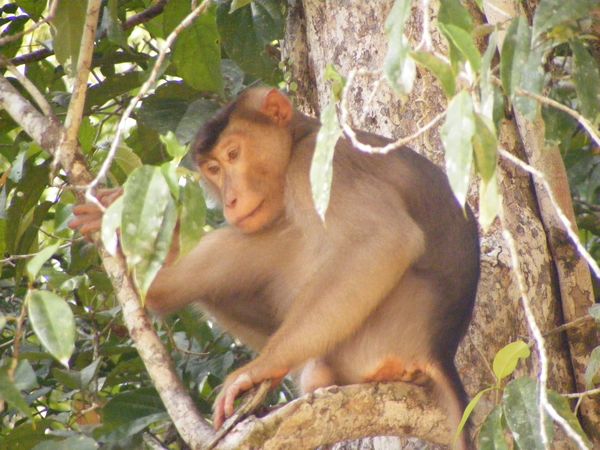
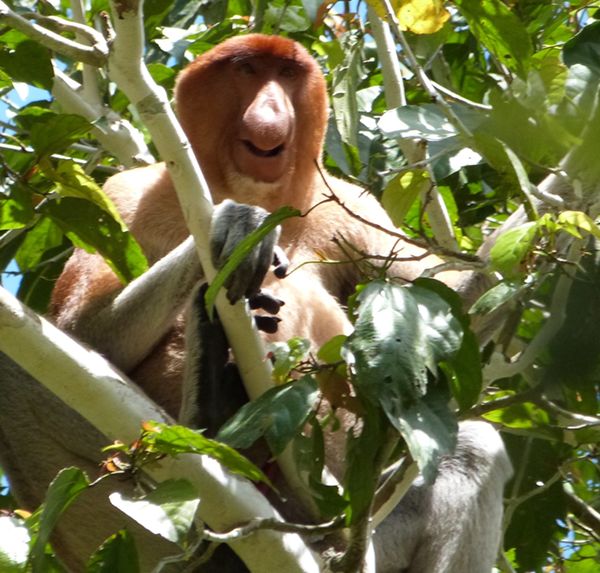
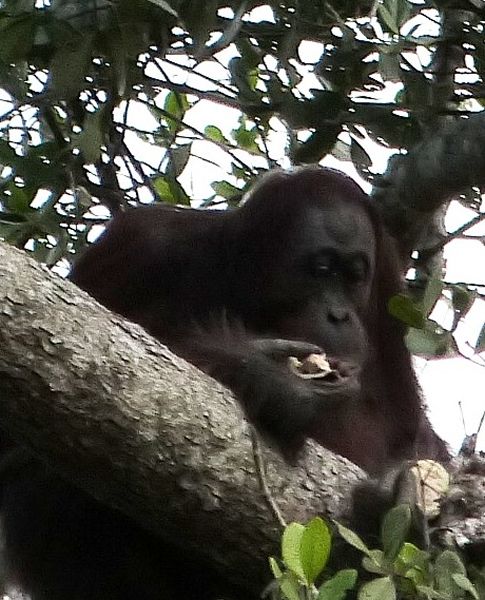
Our
friends, Natalie and Ralph on Saltuto were fortunate enough to see an elephant
swimming across the river using his trunk as a snorkel. Here you can see him swimming and exiting the
water.
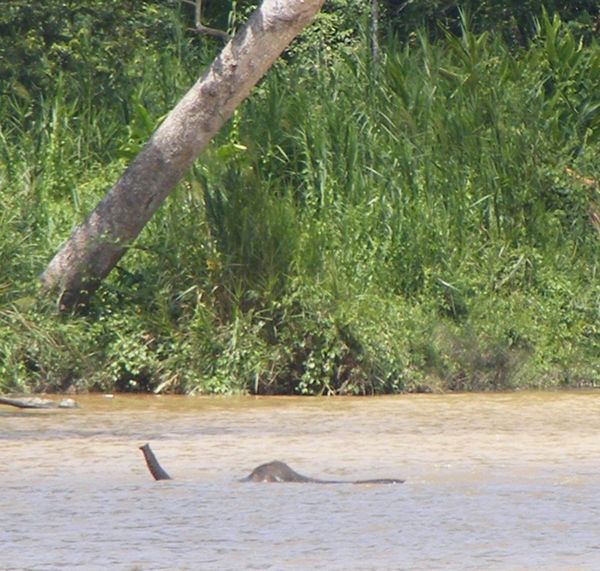
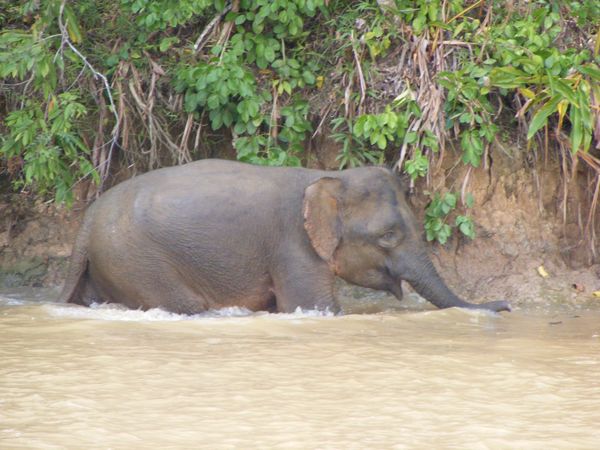
While
ashore with a plastic jerry can looking for gasoline for our dinghy, we met a
family who invited us to celebrate Hari Raya with them. Hari Raya means “Open House” and it marks the
end of “Ramadan” which is the Muslim month of fasting. Naturally, Hari Raya is
about eating a lot! It is a joyful time
where everyone wears new clothes, cleans their house for entertaining and
invites everyone they know over for a visit! We went from home to home in this
small village eating from 10 in the morning until about 3 in the afternoon. Mostly sitting on the floor and chatting with
friends and family all around us. What a
privilege to share this happy occasion and how lucky we were to, once again, be
at the right place at the right time.
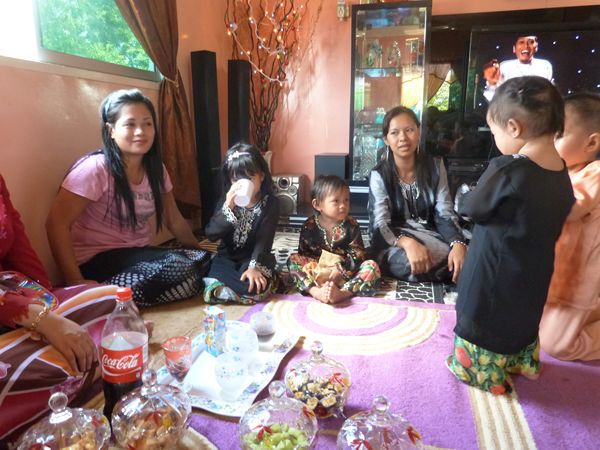
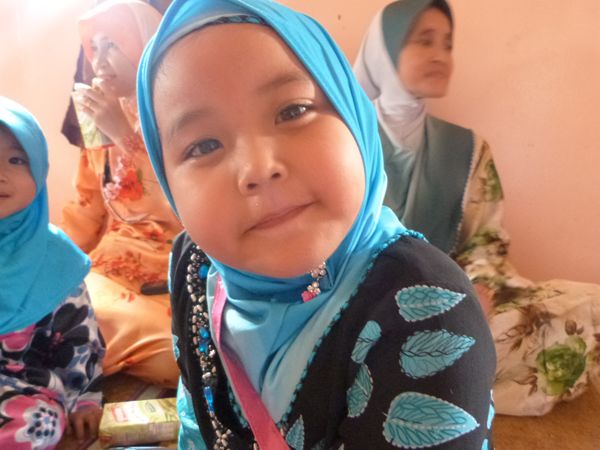
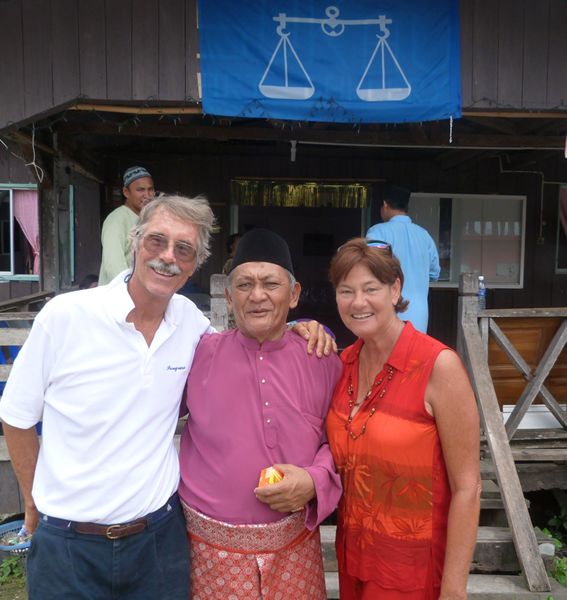
Peregrina
could only spend five days on the river because the moon was waning and the water
level at high tide was going lower and lower each day so we had to move along. We were sad to leave as the Kinabatangan
River was a wonderful experience - a leisurely journey into deepest, darkest
Borneo with a world of exotic animals and, luckily, not a headhunter in sight!